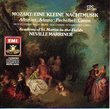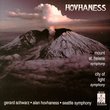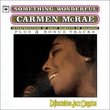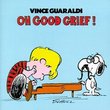| All Artists: John Adams, Edo de Waart, San Francisco Symphony Orchestra Title: Adams: Harmonielehre Members Wishing: 1 Total Copies: 0 Label: Nonesuch / Elektra Release Date: 10/25/1990 Genre: Classical Styles: Historical Periods, Classical (c.1770-1830), Modern, 20th, & 21st Century Number of Discs: 1 SwapaCD Credits: 1 UPC: 075597911527 |
Search - John Adams, Edo de Waart, San Francisco Symphony Orchestra :: Adams: Harmonielehre
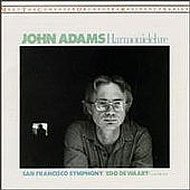 | John Adams, Edo de Waart, San Francisco Symphony Orchestra Adams: Harmonielehre Genre: Classical
Of the music by the four reigning minimalists in this country (Steve Reich, Philip Glass, and Terry Riley are the others), that of John Adams is perhaps the simplest, constructed on punctuated--and percussive--chords rid... more » |
Larger Image |
CD DetailsSynopsis
Amazon.com Of the music by the four reigning minimalists in this country (Steve Reich, Philip Glass, and Terry Riley are the others), that of John Adams is perhaps the simplest, constructed on punctuated--and percussive--chords riding above coherent melodies. This is probably why Adams has had such success with his two operas. Harmonielehre is a sustained orchestral piece in three sections--triptychs framing a slow second movement of unusual somberness, given the gaiety of the opening section. Part III, called "Meister Eckhardt and Quackie", is a sprightly fairy tale of shimmering, glissando-like textures underscored by a dignified flowing melody. --Paul Cook Similarly Requested CDs
|
CD ReviewsA magnificent work Daniel R. Greenfield | Milwaukee, Wisconsin, United States | 01/09/2001 (5 out of 5 stars) "I just discovered John Adams recently, and have heard only a few of his works. I picked up this album from my local library. I was extremely impressed by the scope of this work. For all practical purposes, it is a symphony that compares favorably with any of William Schuman's symphonic works. The beginning reminds me of a Bruckner symphony -- and much of the first movement is positively Brucknerian, albeit it is a Bruckner that has an expressionistic style. The second movement reminds me in spots of late Mahler -- especially that long extended dissonant chord, which can also be heard in M10. The last movement is charming, and probably the most enjoyable movement of this work. All in all, I am tremendously impressed to realize that this music was composed when Adams was a mere 38 years old. A magnificent work." Returning to the Great Ones Grady Harp | Los Angeles, CA United States | 03/01/2006 (5 out of 5 stars) "John Adams is now part of the mainstream of classical music and his newer compositions, married in part to social commentary such as the magnificent 'On the Transmigration of Souls' in tribute to 911, 'El Nino' with its bow to the Hispanic heritage, and of course the obvious - his operas 'Nixon in China', 'The Death of Klinghofer', and 'Doctor Atomic'- gain widespread coverage in the media and rightly so. But now and then it is refreshing to return to some of his purely orchestral works such as the splendid 1981 'Harmonium' and the brilliant 'Harmonielehre' here recorded shortly after its premiere in 1985. 'Harmonielehre' is a mature work, a purely orchestra fabric in which Adams is in full control of his very original musical language. That 'language' is the massive pulsation of single chords that moves subtly in context with various additions and subtractions of instrumental choirs, changing tonal colors and rhythms in a manner that sweeps the work along never allowing a moment of static position so often prevalent in some so-called minimalist music. The work is divided into three parts. Part I is 'like a tanker taking off', a driving almost brutal force. Part II 'The Amfortas Wound' is one of the most serenely beautiful movements has written, an evocation of Wagner's tragedy within 'Parsifal'. Part III 'Meister Eckhardt and Quackie' is the climatic 'harmonic struggle among different tonalities vying for dominance'. Edo de Waart and the San Francisco Orchestra have captured as honest and straight forward a perfomance of this mighty work as we are likely to hear. The recorded sound (from SFOs Davies Hall) in 1985. There is a spaciousness to the recording perhaps in part due to the fact that the CD has no accompanying works. This is the gold standard recording for Adams' important 'Harmonielehre' (translated means Harmony Lesson) and it is a complete success. Highly recommended. Grady Harp, March 06" My favorite musical work Luke A. Muehlhauser | Cambridge, MN USA | 04/14/2008 (5 out of 5 stars) "Emotional brilliance from start to finish, like Brahms' 3rd but so big it can swallow the whole world. My favorite piece of music ever written."
|

 Track Listings (3) - Disc #1
Track Listings (3) - Disc #1